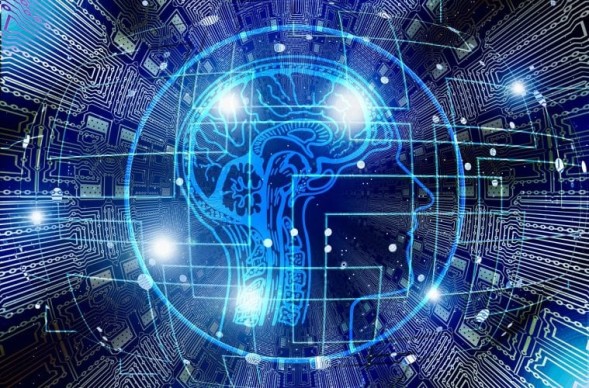Infrastructure Project Execution can improve drastically with the application of Artificial Intelligence in construction
The construction industry has long been applying traditional practices and usually implements novelty at a slower pace than others. However, it is becoming more open to the idea of applying artificial intelligence.
Current Application of AI in Construction
According to a recent study performed by McKinsey & Company, Artificial intelligence: Construction technology’s next frontier, "t
he engineering and construction (E&C) sector is worth more than $10 trillion a year. And while its customers are increasingly sophisticated, it remains severely underdigitized."
 Nevertheless, the companies that are applying Artificial Intelligence to its projects are able to generate 50% more profit.
The application of AI does not imply the use of robots to lay out bricks or drive trucks. It implies the use of algorithms that can solve the greatest of challenges and improve efficiency and productivity. The construction companies that have begun taking on AI have generally adopted it in a fairly nascent levels for actions such as:
Nevertheless, the companies that are applying Artificial Intelligence to its projects are able to generate 50% more profit.
The application of AI does not imply the use of robots to lay out bricks or drive trucks. It implies the use of algorithms that can solve the greatest of challenges and improve efficiency and productivity. The construction companies that have begun taking on AI have generally adopted it in a fairly nascent levels for actions such as:
- Project schedule optimizations and enhanced planning.
- Image recognition which helps analyze video data in order to improve safety on-site and training.
- Enhanced analysis of data using sensors to provide real.-time solutions, reduce costs, and provide preventative maintenance.
How AI can be applied to Construction
According to the above-mentioned report by McKinsey&Company, there are five ways that AI can be applied to engineering and building construction.
1. Reinforcement Learning
Algorithms can be used to conduct trial and error studies without risks. This helps find the best way to execute an action. This is ideal for planning and scheduling tasks for example.
2. Risk Forecasting and Management
With AI, tests on the viability of solutions as well as the eficacy of materials can be conducted. For example, Autodesk has launched BIM 360 Project IQ, a software that uses connected data and machine learning to forecast and prioritize high-risk issues and provide insight into the main challenges that construction managers face.
3. Prefabrication
AI can improve the supply chain coordination, controlling its costs and the flow of money.
4. Machine learning
An example of this is the use of robotic arms, which learn from simulations so they can prefabricate material or perform maintenance tasks effectively. The AEC industry is using machine learning for generative design in order to identify and avoid clashes among the various models created by teams in the planning and design phase.
Building System Planning created GenMEP, an add-on for Revit focusing on the mechanical and plumbing (MEP) design. The software uses machine learning to explore all possible design alternatives and tests to find which design is better, ensuring hat the 3d models of the MEP systems do not clash with the building’s design.
5. Image recognition
When AI is applied with drones and 3D images, engineers can compare what is being developed as well as the final product against the initial plans and designs. It is also possible to identify safety risks in project sites. Smartvid.io is a photo and video management platform that leverages machine learning, speech and image recognition to organize data. This platform automatically tags construction data and proactively suggests safety measures.
Artificial Intelligence and BIM
Finally, AI improves Building Information Modeling (BIM). AI, drone images and the data that is gathered help create models that can be compared to those made by BIM. Thus, creating the opportunity to reduce decision making time drastically.
"Because the impact of AI is contingent on having the right data, E&C leaders cannot take advantage of AI without first undertaking sustained digitization efforts. This includes investing in the right tools and capabilities for data collection and processing, such as cloud infrastructure and advanced analytics." - McKinsey&Company


 Nevertheless, the companies that are applying Artificial Intelligence to its projects are able to generate 50% more profit.
The application of AI does not imply the use of robots to lay out bricks or drive trucks. It implies the use of algorithms that can solve the greatest of challenges and improve efficiency and productivity. The construction companies that have begun taking on AI have generally adopted it in a fairly nascent levels for actions such as:
Nevertheless, the companies that are applying Artificial Intelligence to its projects are able to generate 50% more profit.
The application of AI does not imply the use of robots to lay out bricks or drive trucks. It implies the use of algorithms that can solve the greatest of challenges and improve efficiency and productivity. The construction companies that have begun taking on AI have generally adopted it in a fairly nascent levels for actions such as:
